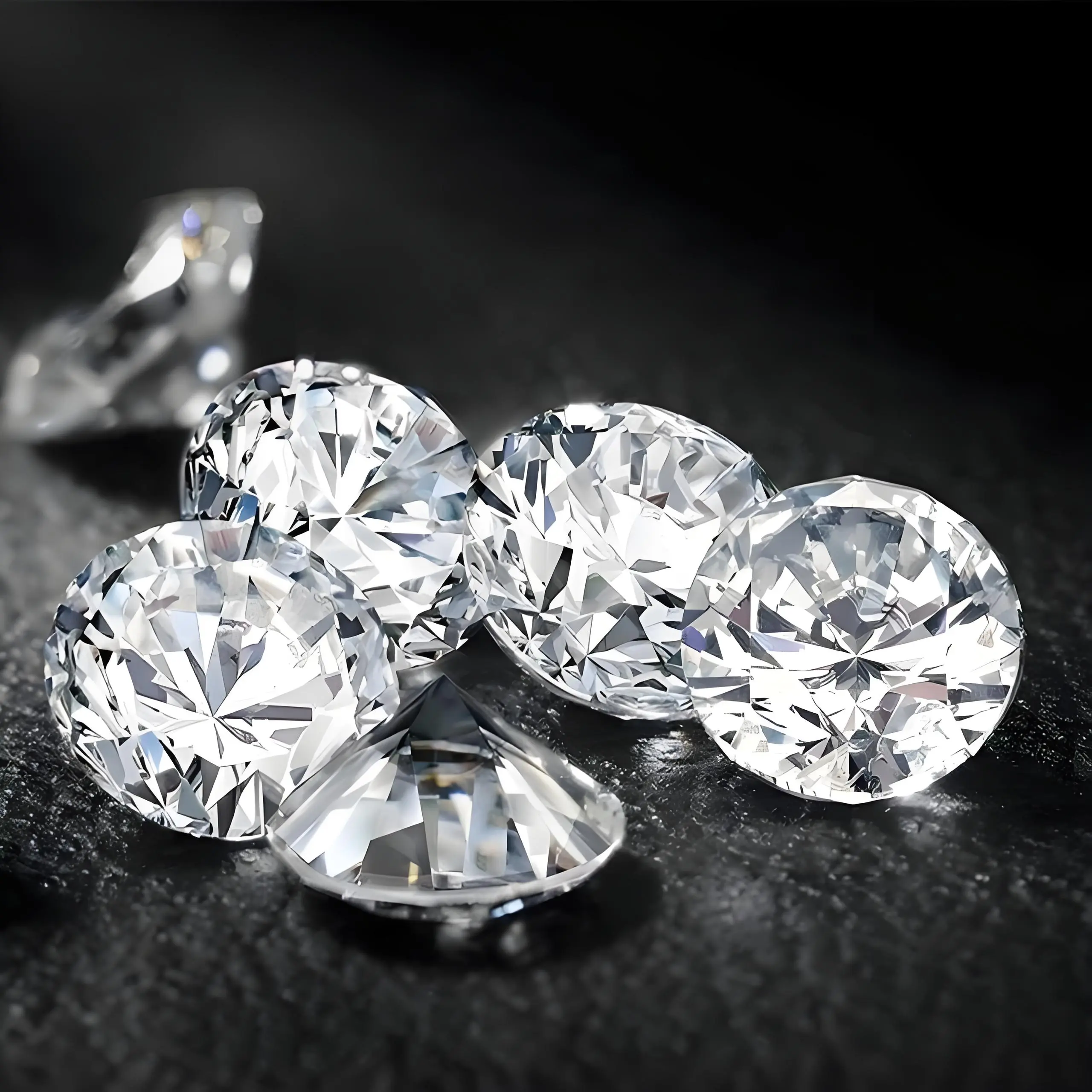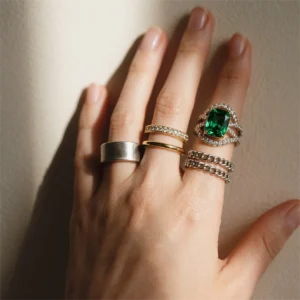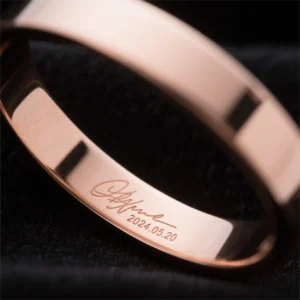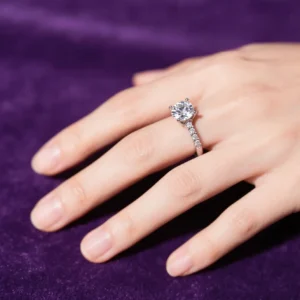Moissanite and cubic zirconia are brilliant, budget-friendly diamond alternatives, with moissanite excelling in fire and durability while cubic zirconia offers maximum affordability; diamond remains unmatched in hardness and timeless allure for those who value rarity and investment. Weigh the pros and cons of moissanite, cubic zirconia, and diamond to make an informed investment in beauty.
What is Moissanite?
Though naturally occurring in space rocks, most moissanite today is lab-grown using silicon carbide. Its signature fiery glow and near-diamond hardness have made it an eco-friendly modern gemstone favorite.
What is Cubic Zirconia?
Made entirely in the lab from zirconium oxide, cubic zirconia is designed to mimic a diamond’s look at a fraction of the price. While softer and scratch-sensitive, it’s a staple for trendy, ever-changing jewelry styles, making it a budget-friendly choice for jewelry that prioritizes affordability over longevity.
What is a Diamond?
Forged in the scorching heat of the Earth over eons, diamonds are nature’s masterpiece—pure carbon crystallized into brilliance. Their legendary hardness and mesmerizing play of light have cemented them as a global emblem of love and luxury. Though their scarcity commands a steep price, their timeless allure ensures they’re cherished across generations, becoming heirlooms that whisper stories of enduring passion.
Difference Between Moissanite VS Cubic Zirconia VS Diamond
Diamonds, moissanite, and cubic zirconia each possess unique qualities, and recognizing their strengths helps you prioritize cost, style, and lasting appeal. By weighing these differences, you can select the gem that best balances your preferences for brilliance, budget, and durability.
| Factor | Diamond | Moissanite | Cubic Zirconia |
| Cost | Expensive | Moderate | Affordable |
| Mohs Scale Hardness | 10 (Forever Stone) | 9.25 (near-diamond durability, scratch-resistant) | 8-8.5 (prone to scratches, needs gentle care) |
| Ethical Issues | Conflict mining concerns | Lab-created | Lab-created |
| Brilliance & Fire | – Refractive index 2.65 – Rainbow sparkle – 0.104 dispersion | – Refractive index 2.42 – Classic white sparkle | – High sparkle – 0.066 dispersion |
| Color & Clarity | Graded from D (colorless) to Z (yellow tint). | Near-colorless | Often perfectly colorless but may cloud over time |
Brilliance Comparison
Diamond: Boasts a refractive index of 2.42, and its single refractive property ensures light bends uniformly, delivering precise and uniform brilliance that’s unmatched in consistency.
Moissanite: 2.65 refractive index and 0.104 dispersion mean it out-sparkles cubic zirconia and even diamond, crafts a kaleidoscope effect. Moissanite’s doubling effect under a loupe is a giveaway, yet its fire is unmatched.
Cubic Zirconia: With a dispersion rate of 0.066, cubic zirconia offers a timeless allure reminiscent of diamond, though its lower fire may lend a subtle, glassy appearance under harsh lighting—a trade-off for its budget-friendly appeal.
Color & Clarity
Moissanite often wins in color with its near-colorless hue, though large stones may hint at yellow/green. Cubic zirconia starts clear but might cloud over time. Diamond is graded D (colorless) to Z (yellowish), its color scale offers precise choice. Both moissanite and cubic zirconia shine in clarity, typically flawless—no distracting inclusions.
Diamond VS Moissanite VS Cubic Zirconia Price
Moissanite and cubic zirconia offer wallet-friendly sparkles compared to natural diamonds. Moissanite, costing around 10% of a diamond’s price, edges out cubic zirconia, which sits at 1% of a diamond’s cost. This gap stems from moissanite’s rarity and diamond-like durability, while cubic zirconia’s mass production and softer nature keep its price low. Diamonds, of course, command a premium due to their natural scarcity and enduring value. For everyday wear with diamond-like appeal, moissanite’s investment pays off. If budget is key, cubic zirconia’s affordability shines. Choose based on your needs: splurge on the diamond’s legacy, opt for moissanite’s balance, or embrace cubic zirconia’s budget-friendly charm.
Hardness & Durability
Moissanite’s 9.25 Mohs hardness (near diamond’s 10) offers robust scratch resistance, making it ideal for daily wear, while its non-porous surface resists dirt, maintaining sparkle effortlessly. Cubic zirconia, at 8-8.5 Mohs, is more affordable and initially brilliant, but its softer composition means it scratches more easily, and its porous texture can trap oils, requiring frequent cleaning to sustain shine. Diamonds, as the hardest gemstone, excel in resilience and natural allure, though they come with a premium cost. Moissanite combines durability and radiance with moderate pricing for prioritizing balance. Cubic zirconia appeals to budget-conscious wearers seeking immediate sparkle, provided they’re prepared for potential upkeep over time.
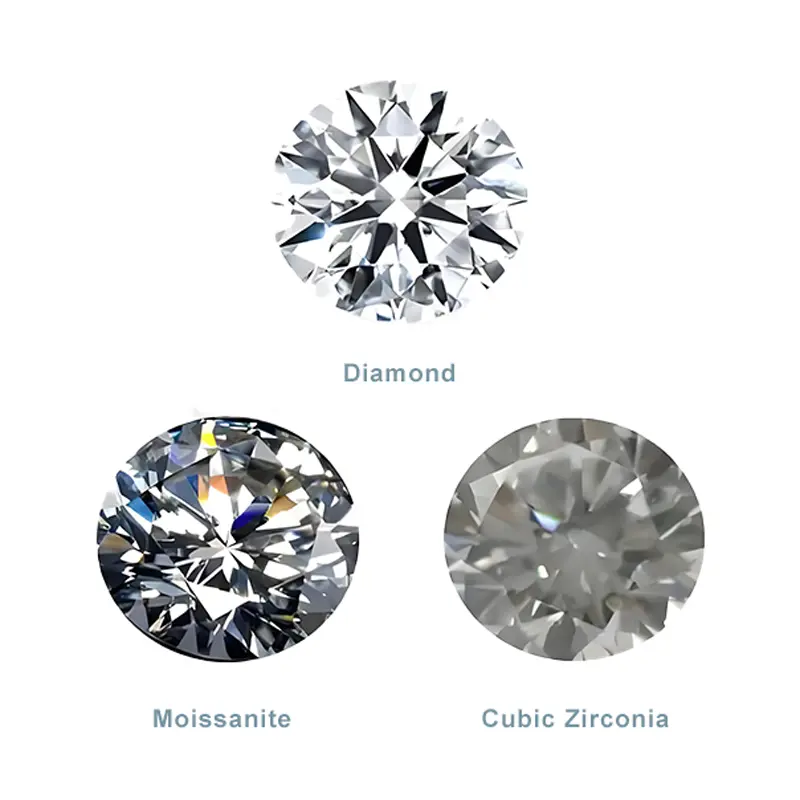
Are Lab Diamond, Moissanite, and Cubic Zirconia the Same?
No, lab-grown diamonds, moissanite, and cubic zirconia all strive to mimic the sparkle of natural diamonds but are fundamentally different. Lab diamonds, composed of pure carbon with a 10 on the Mohs scale, rival natural diamonds in hardness and chemical composition. They’re created under the same conditions as natural diamonds, sharing their look and feel. Moissanite, a distinct gemstone, offers a more affordable alternative. Meanwhile, cubic zirconia is the crystalline form of zirconium dioxide, rarely found in nature despite technical possibilities.
Is Moissanite a Fake Diamond?
No, moissanite is a distinctive gemstone with its own merits. While it’s frequently viewed as a diamond substitute, its value extends beyond that. Numerous individuals favor moissanite over diamonds for several reasons. Its unique sparkle, differing from that of diamonds, is a notable one. Furthermore, moissanite is regarded as a more sustainable option compared to natural diamonds, as it’s lab-created and demands fewer environmental resources for production.
Which Gemstone is Better for An Engagement Ring?
When selecting a gemstone engagement ring, Moissanite stands out for its durability and diamond-like brilliance. Its hardness ensures it can endure everyday wear, making it a favorite for those wanting a timeless ring. On the other hand, cubic zirconia is a budget-friendly alternative that mimics the sparkle of a diamond at a fraction of the cost. Both options have their merits, and the choice between Moissanite and cubic zirconia depends on individual preferences and budget constraints.

